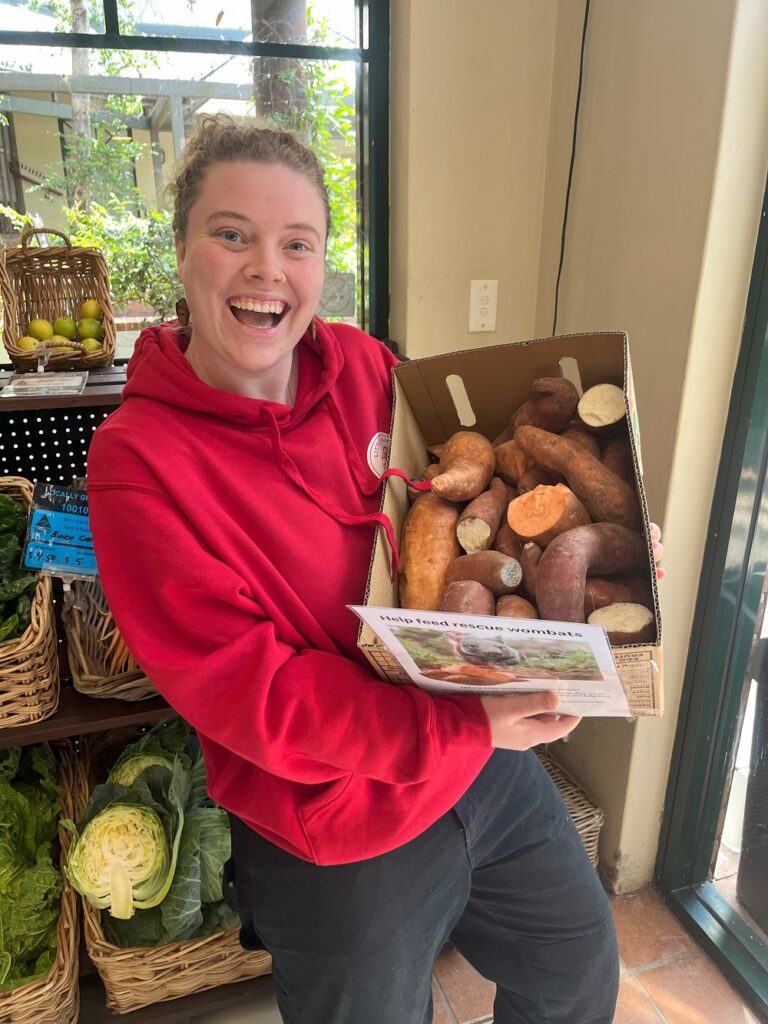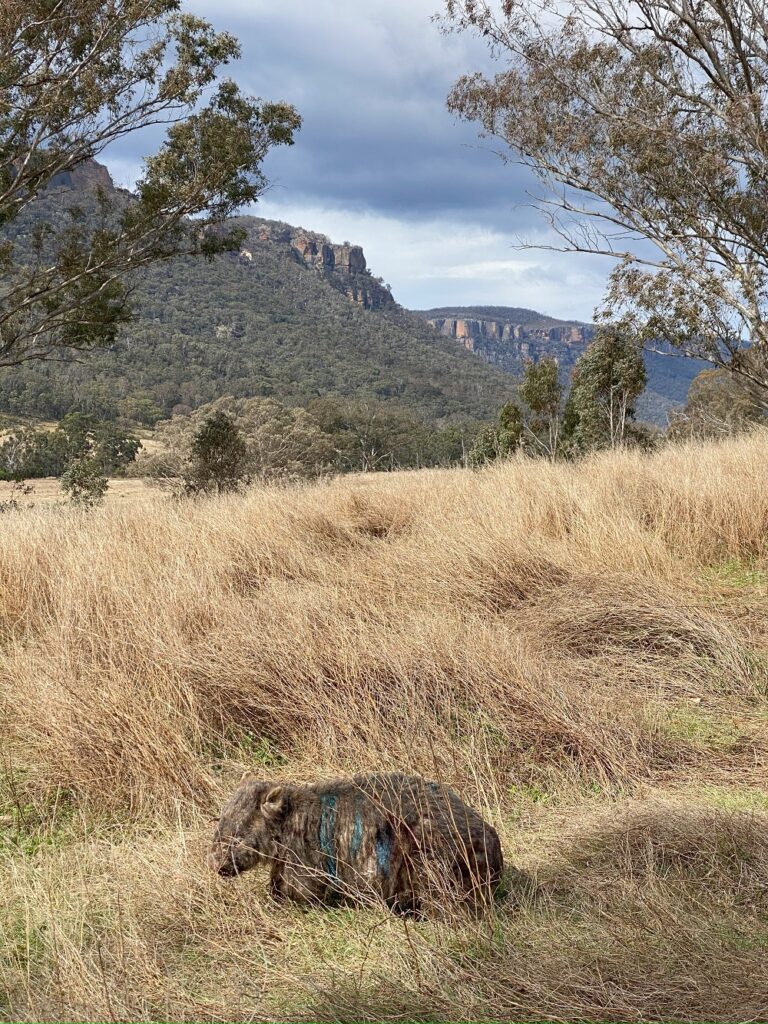You may have noticed that we are collecting sweet potato donations in store for Kanimbla Wombats. Here’s a Q&A with Melinda Kerr from Kanimbla Wombats to learn a little more about their work.
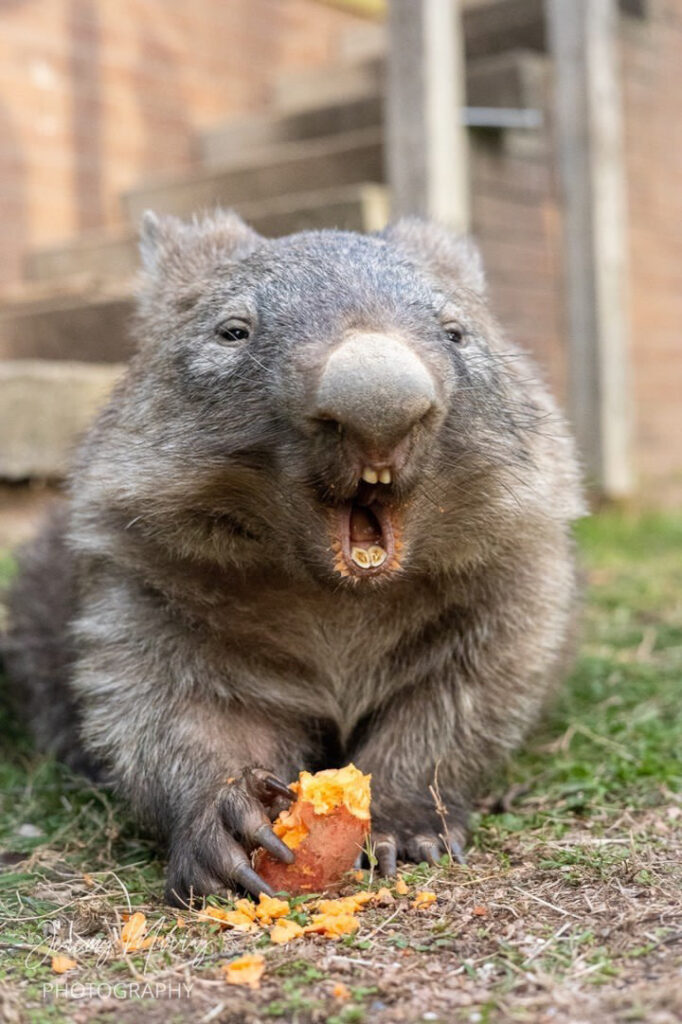
Photo: Jeremy Murray
Kanimbla Wombats is a volunteer organisation established by local wildlife rescuers, Anna Culliton and Melinda Kerr, to treat wombats suffering from mange. Anna is a dedicated rescuer, volunteering her time around the clock to care for wombats. While Melinda runs education programs for the local community on mange and wildlife conservation. Together they hope to prevent continuing population decline in bare nosed wombats.
Co-op: Where are you located and how long have you and Anna been caring for and rescuing wombats?
Melinda: We are located in the Kanimbla Valley but travel all across the Central Tablelands. Anna and I started Kanimbla Wombats in 2020, when I came on board to help Anna who has been rescuing and rehabilitating wombats for over 10 years.
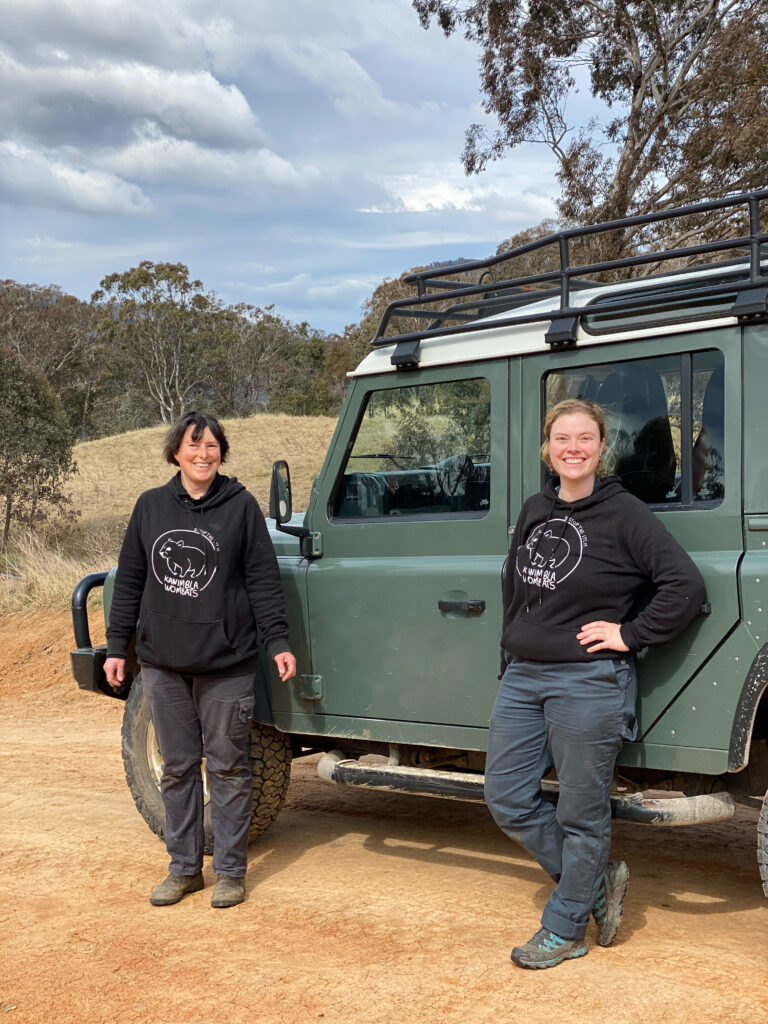
Anna (left) and Melinda
Co-op: What are some of the problems facing the local wombat population?
Melinda: Wombats are, unfortunately, affected by multiple issues. Orphan wombats come into care because their mums are hit by cars, attacked by dogs, or due to other human related deaths. Climate change, increasing natural disasters, and habitat loss are also affecting wombats, causing an increase in mange. Our main focus is treating wombats in the wild for mange which affects 90% of wombat populations and is causing localised extinctions and population decline.
Wombat mange is a disease caused by the sarcoptes scabiei mite. The mite burrows into the skin of its host causing thick crusty skin and hair loss. It is extremely itchy and wombats can injure themselves scratching because of their sharp claws. Mange if left untreated is fatal.
Co-op: Can you describe the work you do to help wombats?
Melinda: Every wombat is different and different situation requires different variations of treatment. We currently use three different methods for treating wombats with mange. One is through the burrow flap which allows for population treatments and weekly doses of Moxidectin when you can’t see the wombat in person. Another option is 3 doses of spot on Bravecto administered over 3 months. The other option is a pole and scoop with Moxidectin. This is a fantastic option if you are able to see the wombats every week. It is a guaranteed dose of treatment and the best way of ensuring a wombat receives all of its medication.
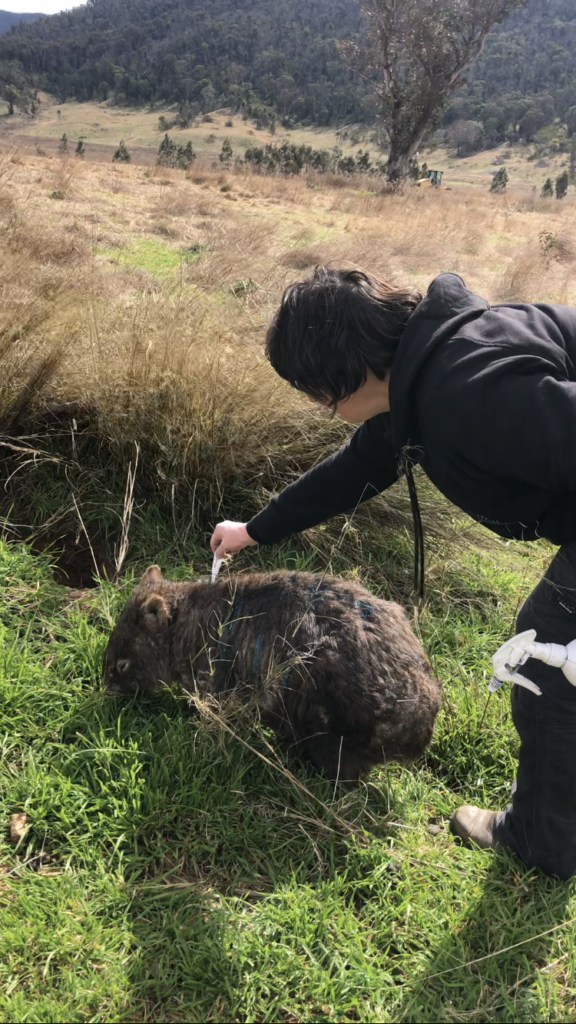
Anna applying Bravecto to a wombat with mange
Co-op: What resources do you need to carry out your work?
Melinda: On average it costs $200 and takes 3 months to treat one wombat for mange. These costs include: mange flaps, wildlife monitoring cameras, batteries, SD and SIM cards for cameras, blue dye for marking, burrow markers, Moxidectin and Bravecto, anti-bacterial spray, PPE and rescue facilities. Plus, countless volunteer hours and kilometres driven weekly to treat wombats across multiple properties.
The sweet potatoes donated by the members at the Co-op help lower the weekly feeding costs of wombats in our care.
Mel collecting your donations at the Co-op
Co-op: How can the general public help?
Melinda: Currently NSW wildlife laws require people to hold a license to treat injured or sick wildlife. If you would like to treat wombats you can do a short online course that will teach you how to diagnose and treat mange using two different methods, and the license will then allow you to directly help us treat wombats. If you don’t hold a community mange license there’s lots of ways you can help out without directly working with the wombats.
Some volunteer activities include:
- Making mange flaps
- Sorting camera trap footage
- Hosting a fundraising event
- Donating sweet potatoes at the Co-op
- Lending your time or specific skill ie: tech support or social media
- Organising a book reading and conservation talk with Mel
- Purchasing a wombat print from local photographer Jeremy Murray
- Enjoying a drop of Kanimbla Wombat supporter’s Little Giant wine
This wombat is being treated for mange by Kanimbla Wombats
Co-op: Can you tell us a little bit about your books and why you wrote them?
Melinda: I wrote Digger Gets the Itch as an educational story to teach children and their communities about mange and how they can help wombats too. The story follows the journey of a baby wombat and their mum who get mange but are then treated by a farmer, walking families through a step by step (page by page) explanation of how to treat a wombat. It is also a fundraiser for the work that we do.
My second children’s book, Vinnie the Rescue Kangaroo, is a true story about my kangaroo “baby Vincent”. It was also written as an educational story to teach families about the importance of driving slowly on country roads and to always stop to check the pouch of wildlife that has been hit.
Each book gives families the knowledge they need to be able to help wildlife in a simple heartwarming format. Children are our future and I really hope that by having these important conversations with them that they grow up loving and respecting wildlife.
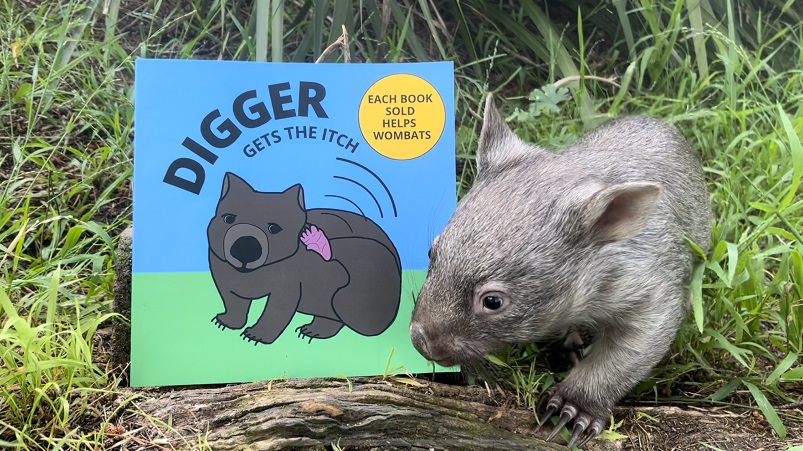
For further enquiries about how you can help please email kanimbla.wombats@gmail.com




